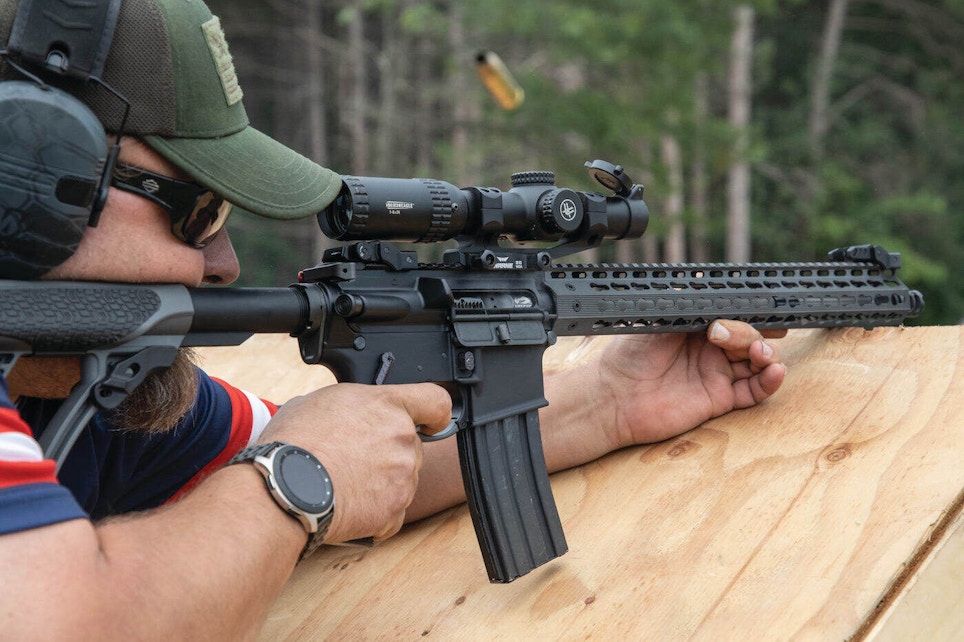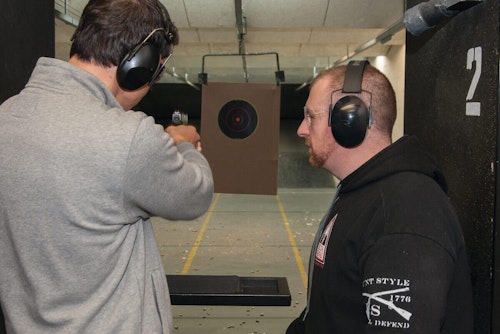The mismanagement of range health and safety issues can be devastating to your employees and your range.
Employees can suffer from hearing loss or lead exposure if they are not educated and monitored to ensure that they are wearing the proper protective equipment to mitigate these risks. These outcomes can lead to absence from work, bad publicity and significant financial penalties for the range ownership. If the Occupational Safety and Health Administration gets involved and finds that you’re not managing health and safety concerns properly, you could be facing all kinds of detrimental issues for your business.
“Ranges are at risk of OSHA inspections due to OSHA’s National Emphasis Program on lead,” says NSSF Compliance Consultant Dale Krupinski. “OSHA is targeting lead in all industries, including the gun range industry. That makes it easier for OSHA to inspect an employer.”
In most instances, Krupinski says, in order for OSHA to come out and inspect a facility, someone from or related to the facility must request it in writing. But for industries involving lead, OSHA can take a request over the phone, which means anyone can make a complaint and bring about an inspection.
“It can be a health department referral, or a physician if little Johnny gets sick, or an angry customer,” Krupinski says. One nuance to this is that the local health department may be the agency that gets involved when the facility is a private shooting club, because OSHA may not regulate a private club; OSHA’s involvement is contingent upon the club having employees. That said, a volunteer who is compensated by free entry into a competition or free range time is considered an employee because he or she is receiving value for helping at the club. So, while OSHA’s oversight is far-reaching, it may not be the only agency that ranges must deal in terms of employee health and safety.
Krupinski says lead hazards have been known since 1951, when an incident involving lead exposure in law enforcement took place in Detroit, Michigan. Fortunately, there are better guidelines and equipment available today to help reduce exposure to lead on shooting ranges; the job now is to build awareness of these mitigation tools.
“I’m trying to partner with whoever I can, to use their microphone to get this information out,” Krupinski says. “I appreciate that the NSSF is helping spread the word and to educate range owners. Many range owners just don’t know who to turn to for the technical assistance that they need.”
Often, Krupinski says, a range operator will hand out PPE such as a respirator and hearing protection and think that’s enough. It’s not.
“Range owners need to do full shift noise and airborne lead monitoring to determine how much of the OSHA standards applies to their range,” Krupinski says. “They won’t know that unless they have complete exposure monitoring,” Krupinski says. “They can’t make sound decisions without data.”
Noise and lead are the primary hazards on ranges, and those hazards are not limited to indoor ranges.
“Outdoor ranges have similar hazards,” he says. “Sometimes the wind is not in their favor, so they have lead exposure issues as well. Outdoor ranges are not exempt from OSHA or from the employer’s responsibility to provide a safe workplace.”
Some OSHA regulations apply to hazardous chemicals that may be used on gun ranges, such as gun cleaning chemicals, janitorial supplies, and chemicals involved in cleaning up lead.
“Employers need to have safety data sheets for all their hazardous chemicals, and they have to provide the related employee training,” Krupinski says. “They need a written hazard communication program, but often they don’t have that. Then when they use PPEs such as respirators, they need a written program for that as well.”
As if all of that isn’t enough, there are small programs such those dealing with blood-borne pathogens. Sometimes a slide bite or hammer bite will occur on the range and an employee must clean up a small amount of blood that may have dripped from a cut.
“This may happen weekly to monthly, depending on the range,” Krupinski says. “If the range requires an employee to administer first aid, then they’re in the blood borne pathogen program. If they require the staff to clean up the blood, they’re required to have a program.” Then there are ordinary safety hazards that may be present: damaged cords, blocked electrical panels, or unguarded machines in the gun smithing area.
“When I go into a range, that’s what I look for,” he says. “I sample for lead and noise, and I do a general safety walkthrough as well. If I can educate range owners on the importance of planning for workplace safety and health during the design phase, that’s great. Doing so will allow the range management team to apply the appropriate line items in their design and operational budgets.”








